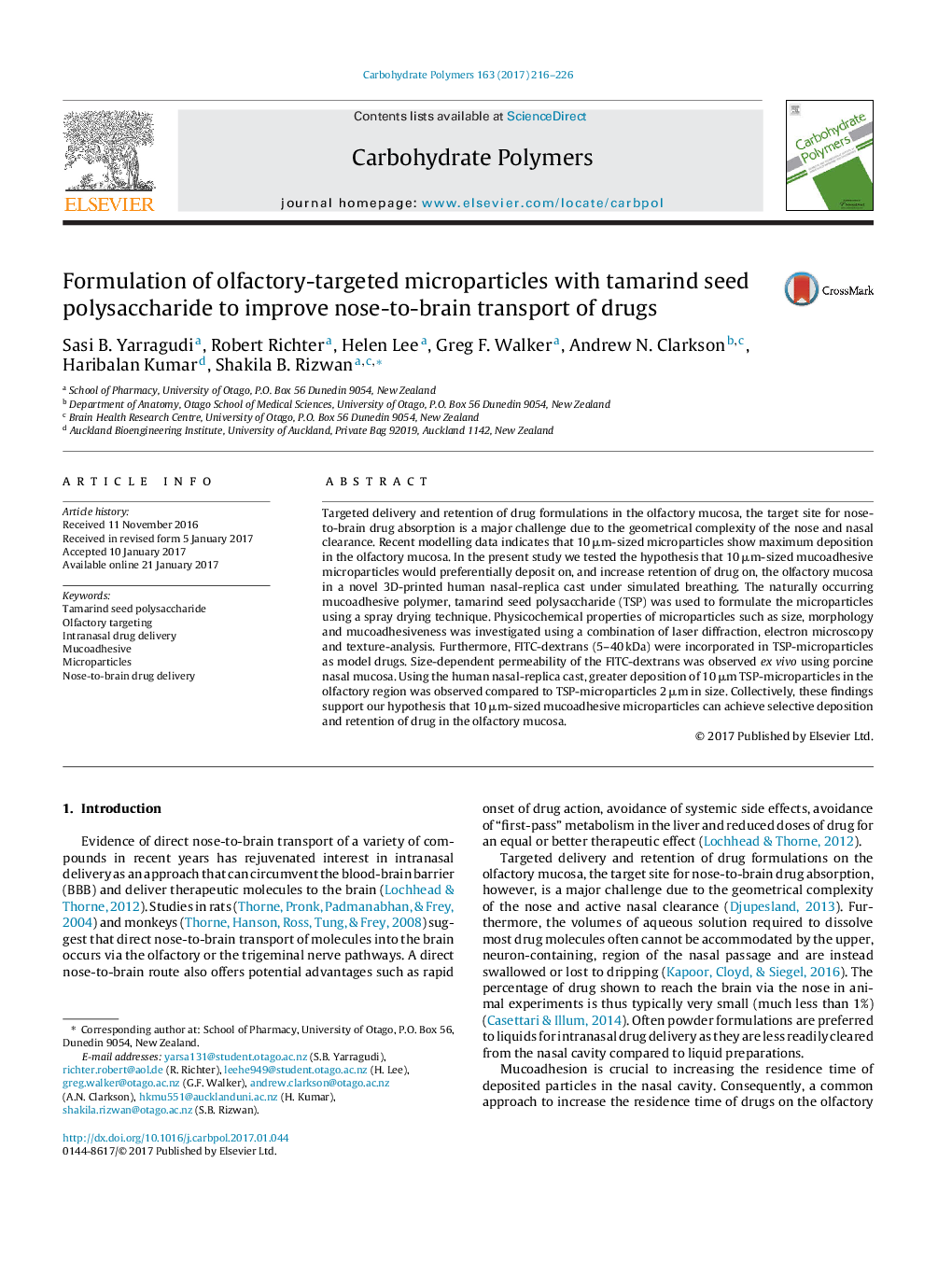| Article ID | Journal | Published Year | Pages | File Type |
|---|---|---|---|---|
| 5157045 | Carbohydrate Polymers | 2017 | 11 Pages |
Abstract
Targeted delivery and retention of drug formulations in the olfactory mucosa, the target site for nose-to-brain drug absorption is a major challenge due to the geometrical complexity of the nose and nasal clearance. Recent modelling data indicates that 10 μm-sized microparticles show maximum deposition in the olfactory mucosa. In the present study we tested the hypothesis that 10 μm-sized mucoadhesive microparticles would preferentially deposit on, and increase retention of drug on, the olfactory mucosa in a novel 3D-printed human nasal-replica cast under simulated breathing. The naturally occurring mucoadhesive polymer, tamarind seed polysaccharide (TSP) was used to formulate the microparticles using a spray drying technique. Physicochemical properties of microparticles such as size, morphology and mucoadhesiveness was investigated using a combination of laser diffraction, electron microscopy and texture-analysis. Furthermore, FITC-dextrans (5-40 kDa) were incorporated in TSP-microparticles as model drugs. Size-dependent permeability of the FITC-dextrans was observed ex vivo using porcine nasal mucosa. Using the human nasal-replica cast, greater deposition of 10 μm TSP-microparticles in the olfactory region was observed compared to TSP-microparticles 2 μm in size. Collectively, these findings support our hypothesis that 10 μm-sized mucoadhesive microparticles can achieve selective deposition and retention of drug in the olfactory mucosa.
Related Topics
Physical Sciences and Engineering
Chemistry
Organic Chemistry
Authors
Sasi B. Yarragudi, Robert Richter, Helen Lee, Greg F. Walker, Andrew N. Clarkson, Haribalan Kumar, Shakila B. Rizwan,
